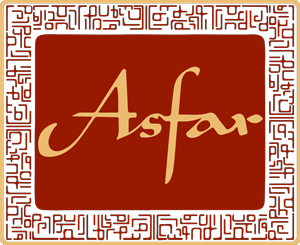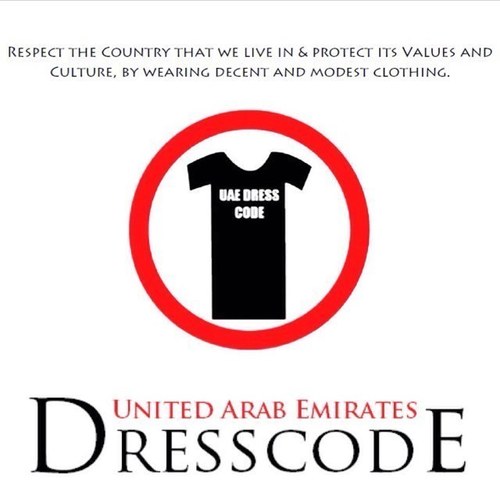I am currently studying on my LLM in International and European Business at the French-Romanian Juridical College in Bucharest, preparing for admission to the Bar. I have a Bachelor of Laws from the University of Bucharest too. I lived and worked in Lebanon in 2012. I am a Romanian married to a Lebanese. I am an avid reader of Middle East stories, events. I wrote -mainly for academic purposes on Lebanon, Gulf minorities and women’s rights. I presented conference papers at American University of Sharjah, Lebanese- American University and at the University of Cambridge. My LLM in International Human Rights Law, 2011, University of Essex was awarded upon completion of the dissertation: Reflection on the minorities in the GCC area.
I. Introduction
We have repeatedly heard or read about the siege of women in Saudi Arabia or elsewhere in conservative countries, confined by religious norms. These affirmations are based on certain grounds. Women of the Gulf are frequently labelled as second-class citizens, due to curtailments in personal legal status, nationality laws, limited participation in political life and the labour force. The Global Gender Gap 2012 ranks Saudi Arabia and Oman among the ten countries with the widest gender gap.1
Human Rights Watch World Report 20132 highlights that in Saudi Arabia millions of women and migrants live and work under an oppressive system. Saudi Arabia implements a so-called ‘guardianship system’, so that women continue to be legally under-age throughout life, a male relative or the husband during married life overseeing most of their conduct. As a result, women are not allowed to drive, to work in certain jobs – that of a judge for example or to undergo certain medical procedures without approval from the male guardian.
In all the Gulf countries, the personal status laws rely upon the jurisdiction of the Sharia’h, a mix of religion, or what is considered divine law and juridical interpretation. The penal codes do not competently tackle violence against women. The laws, in the form they are, do not prevent sexual harassment or domestic abuse. Under this framework and discretionary power of the male judge the wide gender gap becomes obvious.
However, there is a certain level of debate on the issues. I attended a conference in the United Arab Emirates (UAE), American University of Sharjah in March 2012. It was the inaugural Conference of the United Arab Emirates Gender and Women’s Studies Consortium. The organisation, and the attendance was brilliant and the debate was vivid. It was considered a premiere in the Gulf. At the conference I witnessed testimonials about the difficulty of establishing a women’s rights consortium in the American University of Sharjah. It was soon after the conference that the establishment of a bachelor’s degree on motherhood and child upbringing in Ajman was announced, as though this was the sole universal attribute to be nurtured in women. The course was granted the funding required to set up and to support further career opportunities. They take pride in the fact that this is a unique institution.3 The institution in Ajman reflects the common judgement of women’s role in the Gulf. Their announcement stirred controversy, a response in a Gulf News article, arguing that fatherhood is to be enhanced and nurtured too.4
II. Arab Spring, a wind of change or not?
In light of both the above, and the events shattering the region, there is one question on everyone’s lips: Is the Arab Spring a movement leading to more political freedom and equality? Is the Gulf stricter than the other Arab countries and are the social structures harder to be dismantled?
There were high hopes at the beginning of the so-called ‘Arab Spring’, whilst now there is largely scepticism of recent developments and if anything, the Arab Spring has only emphasised the continuous problems pertaining to women, citizenship, and inclusion in this part of the world.
During the Arab Spring, women successfully fought side by side with men for what they assumed would be social justice and democratic responses. They took to the streets and, remarkably for the Gulf, to the Pearl Roundabout in Bahrain in February 2011 defying Al Khalifa rule. However, for many women, the optimism of the Arab Spring has been followed by disappointment.5 Women participated at protests, they conveyed their messages but in the end they appear abandoned in the public and political environment, which remains male dominated. The Arab Spring failed to deliver promises and one could argue that we even entered a phase of reconsidering the initial uprisings, given the erosion of the inaugural plan.
III. Political life and the labour market, two male dominated areas
The recent nomination and factual appointment of women in the Saudi Shura Council made a lot of headlines. The nomination of women in Shura Council (a quasi-parliamentary consultative body in Saudi Arabia) was received with reticence, despite the fact that the body plays an advisory role only. The religious leaders, known for their support to the royals, are particularly uncomfortable with the small steps of female empowerment. King Abdullah issued the decree only after consultation with the Grand Mufti, but the gathering of some clerics and their disapproving tone suggested the discontent on behalf of conservatives.6
The UAE shows a very clear domination of females in university enrolment. The pattern indicating growing female enrolment in university is not matched by a similar pattern in women’s economic participation.7 In fact, women tend to prominently hold positions in the Government and Education sectors (public sectors), despite the fact that Dubai is a main international flourishing business hub.
In addition, with the crackdown on association and assembly following fears of similar movements to the Arab Spring revolts, the UAE authorities have expanded their inquisitorial attitude to women over the links to organisations supposed to undermine the society. The UAE attorney-general stated that the inquiries complied ‘with full respect for the right to privacy, the norms and the traditions of UAE society, [and] in line with the rules and principles of [Islamic] sharia [law]’.8 This depicts the extra burden women face when they access the male dominated labour market.
IV. Similarities and specificities of the Arab Gulf in the broader Middle East context
The Gulf States are a relatively new state formation. The UAE has recently celebrated 41 years of independence (in December 2012) after a long colonial rule. The structure that was pre-existent to colonial rule is the tribe, whose kinship ties still hold prominence today. Other Arab states have longer traditions of political bodies, history of passing laws beyond a Sharia’h’s interpretation and attempts to create a civil society presence. However, the patriarchal system is prevalent within the whole region. On the other hand, due to eagerness to acquire Western sympathy, the Gulf rulers promote the idea of change, but this is a change only by name. This is not new in the spirit of Arab politics, where the tendencies are to emulate regulations they cannot translate into current practice. The Gulf is an oasis of wealth and growth, whilst a large part of the Arab world suffers massively from sectarian tensions, nepotism and disregard of civil rights. This latter enumeration particularly applies to the Gulf. The tendency towards broader receptiveness is very young and wealth appears to come before the formation of newer social structures. Nonetheless, the Gulf sheikdoms remain distinctive as politically conservative and maintain a strict adherence to religion over women, the law or politics.
V. Conclusion
Even though the drift towards change seems encouraging and has started to be gain some momentum, the truth is that the Gulf society is highly conservative and prioritises a patriarchal system. The results of the potentially contagious over-spill of uprisings cannot be anticipated but have not yet seriously shaken existing structures of power, the emirs, rulers and their families. The rage against al Khalifa’s rule in Bahrain and the demands crossed sects and genders but pre-existent structures managed to guard their safety nets. The tender spot in the development of the Arab region is kinship that builds and hinders at the same time a strong and transparent institutional apparatus. Their transformation into wealthy, bustling city-states in a matter of decades has been impressive. From tiny fishing villages under long colonial protectorates to the metropolis’ in the deserts of Arabia, the path is a long one. As is the path from the guardianship system to women’s rights and gender justice.
1 On Global Gender Gap, as in: http://www.weforum.org/issues/global-gender-gap 
2 Human Rights World Report 2013, Chapter on Saudi Arabia as in: http://www.hrw.org/world-report/2013/country-chapters/saudi-arabia 
3 Nurturing women to be good mothers, as in: http://gulfnews.com/news/gulf/uae/education/nurturing-women-to-be-good-mothers-1.998873 
4 Nurturing men to become caring fathers, as in: http://gulfnews.com/opinions/columnists/nurturing-men-to-become-caring-fathers-1.1004695#.T36Pg8o6KLY 
5 Amal al Maliki, Qatari author speaking about the failure of Arab Spring as in: http://mideastposts.com/2012/04/arab-spring-is-failing-women/ 
6 Saudi Arabia king swears in first women in Shura Council, as in : http://www.bbc.co.uk/news/world-middle-east-21516955 
7 ‘Nawar Al-Hassan Golley, Associate Professor in Literary Theory and Women’s Studies at the American University of Sharjah, UAE attributes the high university enrolment rate and low female labour force participation to the social upbringing of girls’.,as in: http://educationinthemena.wordpress.com/2012/11/page/2/ 
8 UAE expands crackdown to women, as in : http://www.ft.com/cms/s/0/76fed6de-5a7d-11e2-bc93-00144feab49a.html#ixzz2LqC18G8g 

An example of a dress-code sign in the United Arab Emirates.

Women protestors marching to Pearl roundabout, Manama, Bahrain, 22 February 2011.


